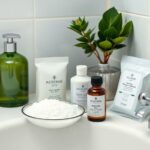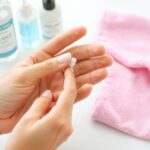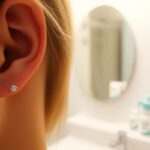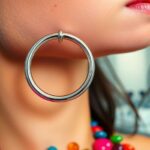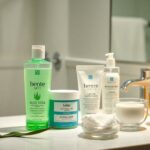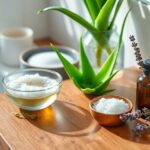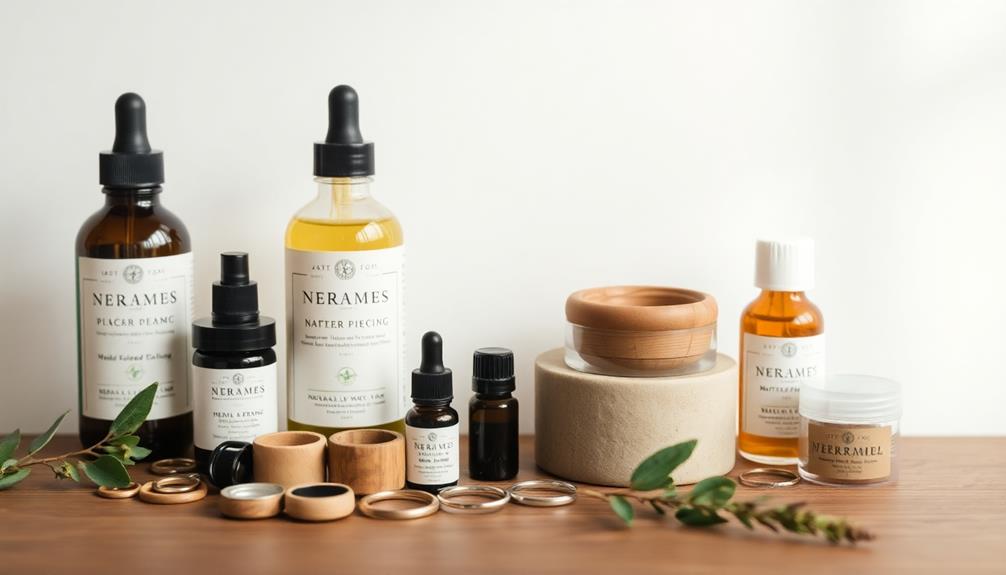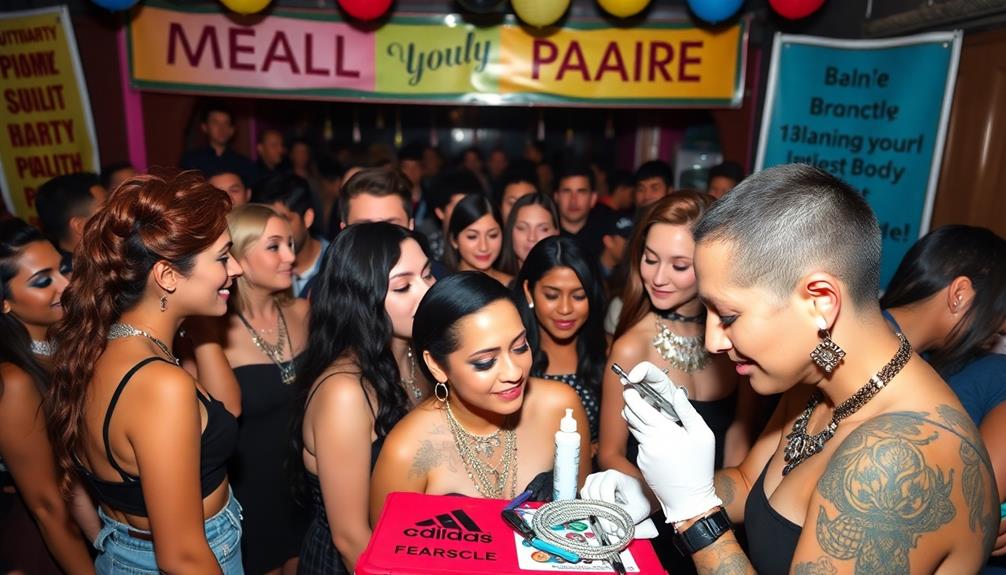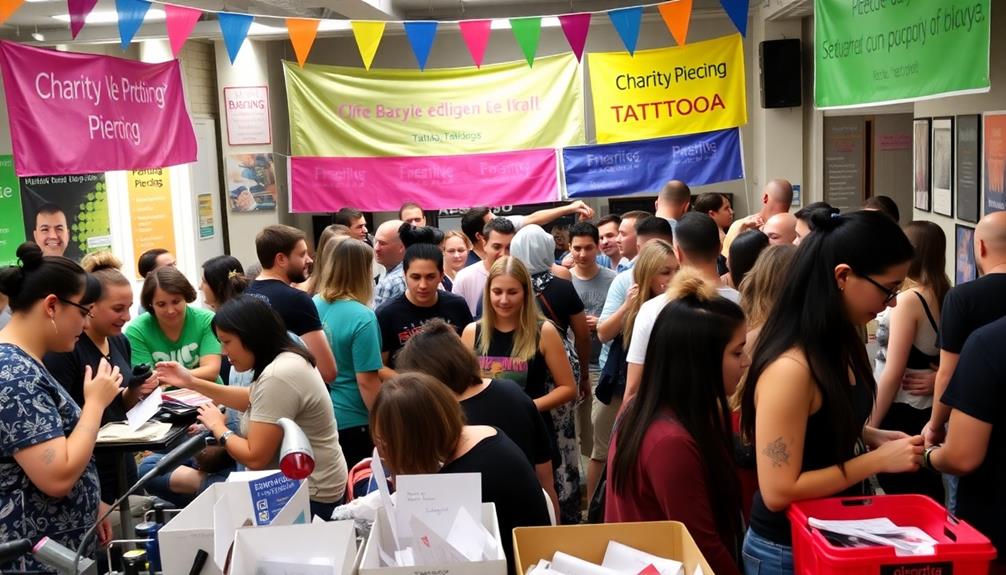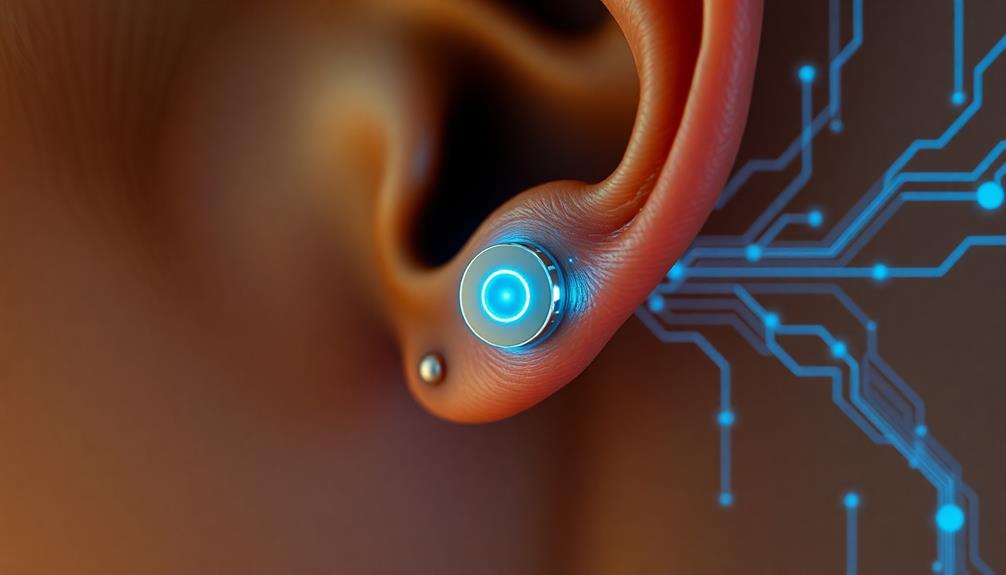Extreme healing practices for piercings often do more harm than good. You might think twisting jewelry or using ointments speeds up healing, but these methods can irritate the skin and prolong the process. It's essential to understand that real infections are rare, and many normal symptoms are mistaken for issues. Sticking to saline solution for aftercare is your best bet. Relying on harsh chemicals or continuously cleaning can lead to inflammation. So, if you want to guarantee your piercing heals well and comfortably, there's more to uncover about the safest practices for aftercare.
Key Takeaways
- Twisting or moving jewelry during healing increases irritation and prolongs the healing process, contrary to common beliefs about adjusting for comfort.
- Harsh chemicals and excessive cleaning can irritate the skin, leading to prolonged healing times rather than promoting recovery.
- Ointments and essential oils can create moist environments that foster bacterial growth, risking infection instead of aiding healing.
- Using saline solution is the only recommended aftercare method for cleaning piercings, as it minimizes infection risk effectively.
- Switching jewelry too soon can cause trauma to the piercing, increasing the likelihood of complications and scarring.
Common Myths About Piercing Care
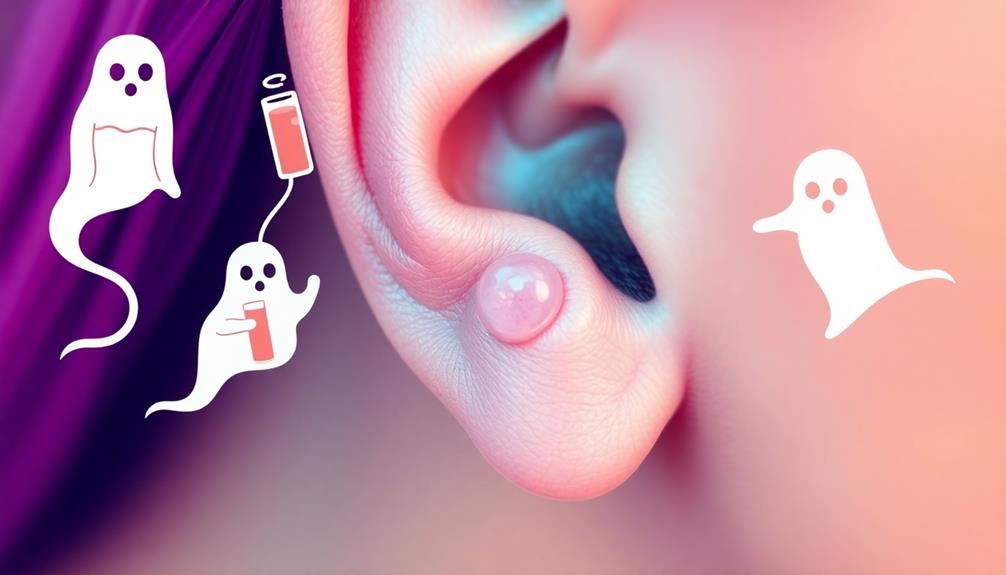
When it comes to piercing care, several myths can lead you astray. One common myth is that you should twist your jewelry during the healing process. In reality, doing so can irritate the healing skin and prolong healing times, so it's best to leave your body jewelry undisturbed.
Another misconception is that most piercings heal fully in just one to two weeks. However, many require at least four weeks, with some taking several months for complete internal healing.
Using ointments and essential oils on healing piercings is also discouraged. These products can clog pores and irritate your skin, while saline solution is the only recommended method for proper aftercare.
Additionally, true piercing infections are rare; they're often confused with normal healing symptoms like swelling and discharge.
Understanding Piercing Healing Times
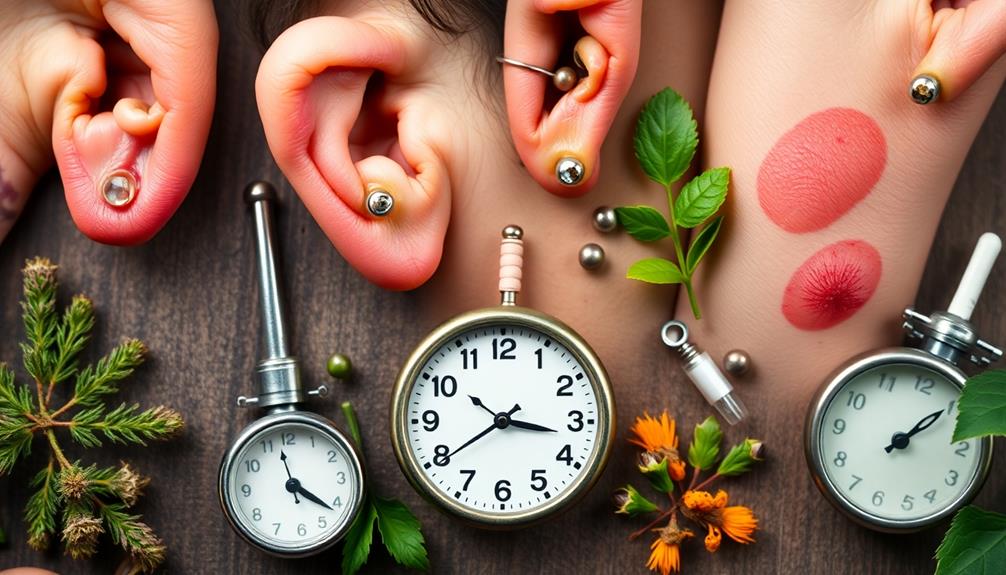
Piercing healing times can vary considerably based on several factors, including the type of piercing and your body's individual response to the process. Generally, piercings take a minimum of four weeks to heal, but cartilage piercings can take several months.
It's important to understand that the perceived external healing doesn't guarantee that the internal healing is complete, making it essential to be patient.
Proper aftercare is critical during this time. If you cut corners or stop your aftercare routine too early, you risk prolonging the healing process and increasing the risk of infections.
Following recommended care practices throughout the entire healing time is key.
Don't fall for common myths that suggest you can speed up healing with essential oils or other unverified methods. Instead, focus on maintaining clean and dry conditions around your new piercing.
Knowing that different piercings have varying healing timelines will help you set realistic expectations and reduce anxiety about the healing process.
The Truth About Infections and Keloids
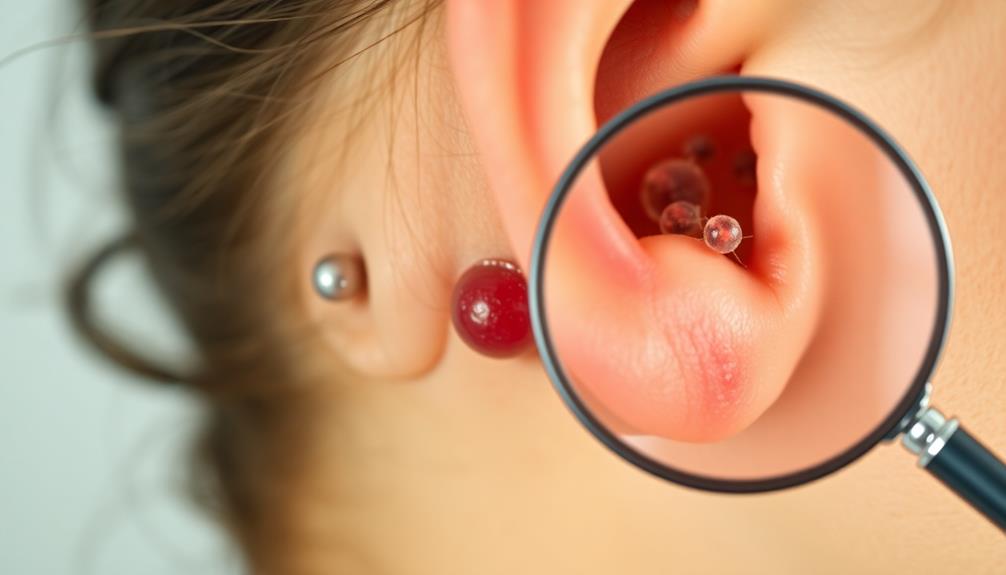
Though it's important to worry about potential complications, understanding the truth about infections and keloids can ease your concerns during the healing process.
Infections are quite rare in body piercing, affecting only a small percentage of cases. Symptoms like redness and discharge can often be normal healing signs rather than indicators of infection. True infections require medical intervention and won't resolve with your standard aftercare regimen, highlighting the significance of proper hygiene practices.
Keloids, on the other hand, arise from excessive collagen production during healing. They occur in less than 10% of the population and are primarily genetic, not linked to the type of piercing.
It's crucial to distinguish between normal irritation bumps and keloids; minor bumps are common and usually resolve on their own.
Safe Practices for Piercing Aftercare
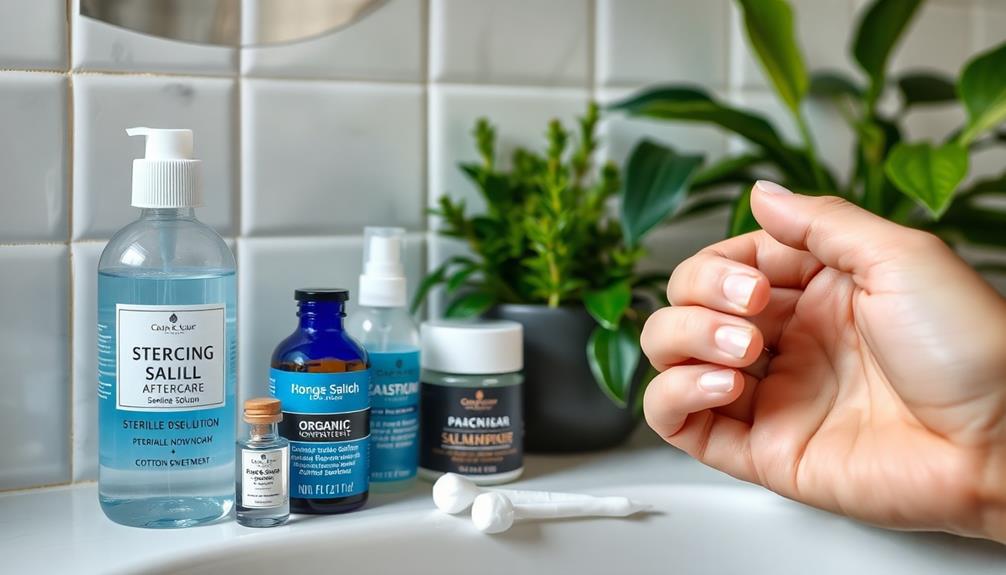
Effective aftercare is vital for guaranteeing your piercing heals properly and minimizes the risk of complications.
Start by using a saline solution for cleaning your healing piercings, as it's the only recommended product that effectively cleans without causing irritation. Make certain to clean the area gently, avoiding any harsh chemicals or soaps that might irritate the skin.
While your piercing heals, avoid twisting or moving the jewelry. This can lead to increased irritation and discomfort, which may complicate the healing process.
Keep the piercing dry and clean; refrain from using ointments or essential oils, as these can clog pores and irritate the healing skin.
It's important to monitor your piercing for signs of infection. Look out for excessive redness, swelling, or discharge. If you notice any of these symptoms, consult a professional piercer immediately to guarantee proper care.
Finally, always follow the specific aftercare instructions provided by your professional piercer, as different types of piercings may require tailored care routines for the best healing.
Risks of Extreme Healing Methods
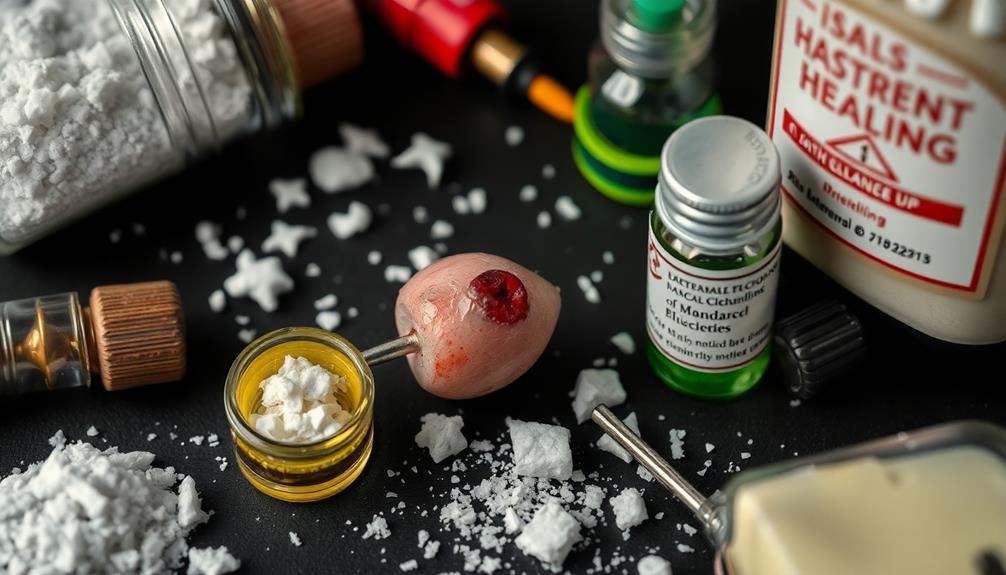
While following safe aftercare practices is important, some people may turn to extreme healing methods that can do more harm than good.
These methods, like excessive cleaning or using harsh chemicals, often irritate your skin and prolong the healing process instead of promoting it. Twisting or turning the jewelry during the healing process increases your risk of inflammation, leading to complications like piercing bumps or even infection.
Applying ointments or essential oils might seem beneficial, but they can create a moist environment that fosters bacterial growth, which is counterproductive to healing.
Furthermore, using unregulated or non-sterile products for aftercare can introduce harmful pathogens, greatly heightening the risk of infection compared to safe saline solutions.
Switching jewelry materials or sizes too quickly before your piercing is fully healed can cause trauma, resulting in increased discomfort and potential scarring.
The bottom line is that extreme healing methods can lead to tissue damage, prolonged inflammation, and unwanted complications.
Sticking to proven aftercare practices is your best bet for a smooth, healthy healing journey.
Frequently Asked Questions
Can I Change My Jewelry During the Healing Process?
You shouldn't change your jewelry during the healing process. Doing so can irritate your piercing, increase the risk of infection, and extend healing time. It's best to wait until your piercing is fully healed.
Is It Safe to Swim With a New Piercing?
Diving into a pool with a new piercing's like jumping into a shark tank! It's best to steer clear of swimming for at least a few weeks to avoid infections and complications. Your healing's worth the wait!
What Should I Do if My Piercing Smells Bad?
If your piercing smells bad, clean it gently with saline solution. Avoid using harsh chemicals, and keep the area dry. If the odor persists or worsens, consult a professional piercer or healthcare provider for advice.
How Do I Know if My Piercing Is Healing Properly?
If your piercing's healing well, it shouldn't hurt or ooze pus. For example, when Sarah noticed her new earlobe piercing was no longer red and tender, she knew it was on the right track.
Are There Foods That Can Affect Piercing Healing?
Yes, certain foods can affect your piercing's healing. Avoid excessive sugar, alcohol, and spicy foods, as they may cause inflammation or irritation. Focus on a balanced diet rich in vitamins to support your healing process.
Conclusion
In the end, your piercing deserves gentle care, not extreme measures. Picture a delicate flower nurturing its petals in the soft sunlight—this is how you should treat your body. Avoid the myths and harsh methods that could harm your healing. Instead, embrace safe practices that let your piercing bloom beautifully without the threat of infection or scarring. Remember, the path to healing is a gentle journey, not a reckless sprint. Cherish your body, and it'll thank you.
Hi, my name is Danielle, and I’m an author for piercings-body.com. I have a passion for writing and love to share my knowledge on all things body piercing-related. I’m also a huge advocate for safe body modification practices and believe everyone should be able to make informed decisions about their bodies. When I’m not writing or blogging, I enjoy spending time with my family and friends, practicing yoga, and exploring new places.


